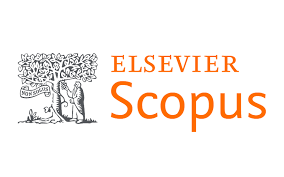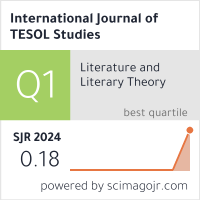2632-6779 (Print)
2633-6898 (Online)


Scopus
Ulrich’s Periodicals Directory (ProQuest)
MLA International Bibliography
MLA Directory of Periodicals
Directory of Open Access Journals (DOAJ)
QOAM (Quality Open Access Market)
British National Bibliography
WAC Clearinghouse Journal Listings
EBSCO Education
ICI Journals Master List
ERIH PLUS
CNKI Scholar
Gale-Cengage
WorldCat
Crossref
Baidu Scholar
British Library
J-Gate
ROAD
BASE
Publons
Google Scholar
Semantic Scholar
ORE Directory
TIRF
China National Center for Philosophy and Social Sciences Documentation
Kooi Cheng Lee
National University of Singapore, Singapore
Radhika Jaidev
Singapore Institute of Technology, Singapore
This special issue opens with a conceptual essay by Lam (2025) which focuses on instructors of workplace communication courses. Lam highlights the crucial role these instructors play in maintaining the relevance of course content amidst rapidly evolving workplace changes. Using Boyer's framework, Lam provides concrete suggestions on how instructors can participate in iterative processes of learning, discovery, internalization, and the transfer and sharing of newly acquired knowledge with their students, facilitated by effective onboarding and in-service training programs.
Expanding on the concept of the important role instructors play, Koo (2025) conducted an interesting investigation to determine whether instructors' backgrounds influence their expectations of students' use of non-verbal communication cues in oral presentations. Her findings suggest that instructors should take into account a diverse range of indicators when teaching classes comprising students from different cultural backgrounds with varying ideas of what constitutes effective non-verbal cues. Koo’s study reinforces Du-Babcock’s (2018) contention that research in Asian workplace communication should consider cultural factors, power dynamics in language use, and the demands of international business organizational communication.
Approaching workplace communication from a different perspective while continuing the focus on preparing students for the workplace, Du-Babcock and Wu (2025) conducted a longitudinal study examining students on internships. Findings from multiple stakeholders indicate that although the interns demonstrated competency and readiness for effective integration into the Asian workplace, supervisors desired a higher degree of confidence in decision-making communication, as well as the development of mindsets and attitudes reflective of workplace professionals. Du-Babcock and Wu conclude that the internship experience is invaluable for enculturating students into the workplace.
Concluding this special issue is Lee’s reflection on assertive communication, particularly in preparing students in an Asian context to actively participate and have their voices heard in an international workplace (2025). To encourage her students to articulate their views in difficult conversations and ask insightful questions, Lee utilised a scenario-based approach. This method allows students to address both the content and the affective aspects involved in such communication. While the scenario-based approach has been well-received, Lee plans to pilot role-playing and scenarios derived from students' own experiences. She remains convinced that assertive communication is a valuable competency for students and can be effectively learned through scenarios.
For future research on preparing students in Asian higher education for workplace communication, we contend that it should be contextualized with consideration for socio-economic, political, and cultural nuances, as well as strong alignment with industry needs. In the coming decades, we envision several areas of research gaining prominence, including the impact of AI on workplace communication, inter-generational communication, and discussions on well-being, work-life balance, and empathetic communication.